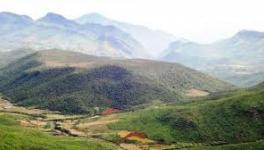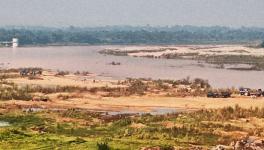Resistance Against Himachal Hydropower Projects Reaches Ropa Valley

The NO MEANS NO is a youth-led campaign strongly supported by villagers, especially in the Kinnaur district.
The Himachal Pradesh government’s plan to generate 722.4 MW by constructing 27 hydropower projects has triggered a boycott of hydel energy in the state. The boycott, with the tagline ‘NO MEANS NO’, is a youth-led campaign strongly supported by villagers, especially in the Kinnaur district.
Seven of the 27 projects are located in Kinnaur and are expected to produce 5-205 MW. The largest, Ropa Khadd Hydroelectric Project, was supposed to be built on Satluj’s tributary Ropa and expected to generate 205 MW.
Despite two bidding rounds—May 2022 and April 18 this year—no bidder has come forward due to the increasing resistance from locals.
According to campaign members, the recent landslides and climate change in the state have triggered resistance resulting in a series of discussions at the village level to educate the communities about the potential impacts of these hydroelectric projects.
Activist and educator Narendra Negi says that corporate entities and the government “can no longer manipulate locals as the youth have understood the devastation these projects cause”.
An investigation of forestland diverted for such projects in Himachal found that the construction of hydropower projects affected land use, disturbed forest biodiversity, fragmented the forest landscape, and caused problems in compensatory afforestation plantations.
The study revealed that Himachal generates approximately 12,000 MW with Kinnaur alone contributing the most at 4,000 MW.
Located in eastern Himachal and touching Tibet, Kinnaur is home to mountain ranges such as Zanskar, the Himalayas and Dhauladhar and is spread over 6,401 sq km. The district is home to several permanent and seasonal glaciers and sources several rivers, especially Satluj, which has many tributaries, like Ropa, Spiti and Baspa.
Jeeta Singh Negi, deputy head of Sunnam village, among the six villages that would be impacted by the ‘Ropa Khad Project, told Newsclick that villagers are being fooled in the name of development.
Negi, among the 36 members of Ropa Bachao Samiti at the forefront of the protest movement, said that the latest campaign represents a shift away from negotiation. “We will not let any corporation and officials enter the village.”
The boycott originated from the widespread protests against the Jangi Thopan Powari Hydroelectricity Project, located around 40 km from Ropa village. One of the state’s most ambitious projects was supposed to be built at an estimated cost of Rs 5,700 crore and generate 804 MW but is yet to begin despite the MoU signed in 2019 and Satluj Jal Vidyut Nagar Nigam roped in for the construction.
Mentioning the resistance against the “recklessness” in approving power projects in this sensitive zone of the Himalayas, campaign member Buddha Sain Negi, from Jangi village, shared an instance of violence during the construction of Karcham Wangtoo project in 2006.
“The project had violated the norms to an extent where locals had no other option but to enter the site and stop the construction,” he alleged.
“The project was commissioned despite only two out of the 15 Gram Panchayats signing the NOC with Jaypee Power Ventures Limited. It triggered a massive resistance that was brutally crushed by the state,” he alleged.
Negi claimed that power projects in Himachal and climate change trigger landslides and subsidence. His claim is supported by a study that revealed that the impact of climate change in the state has worsened due to the proliferation of mega hydropower dams.
Utilising government data and on-the-ground research in ecologically sensitive Kinnaur, the study examined the extent, nature and impact of forest diversion for hydropower projects. The findings indicated that the construction of hydropower projects threatened biodiversity, affected indigenous people, and fragmented critical wildlife habitats.
Manshi Asher, a senior researcher affiliated with the environment and research collective Himdhara who co-authored the study, told Newsclick that the upper areas of Kinnaur, where the Ropa Valley is located, is a “highly seismic zone and prone to landslides”.
“Kinnaur witnessed a lot of landslides, flash floods and erosion in the last few years. Our research found that such climate hazards are being exacerbated due to land use change caused by hydroelectric projects in the region.”
Get the latest reports & analysis with people's perspective on Protests, movements & deep analytical videos, discussions of the current affairs in your Telegram app. Subscribe to NewsClick's Telegram channel & get Real-Time updates on stories, as they get published on our website.























